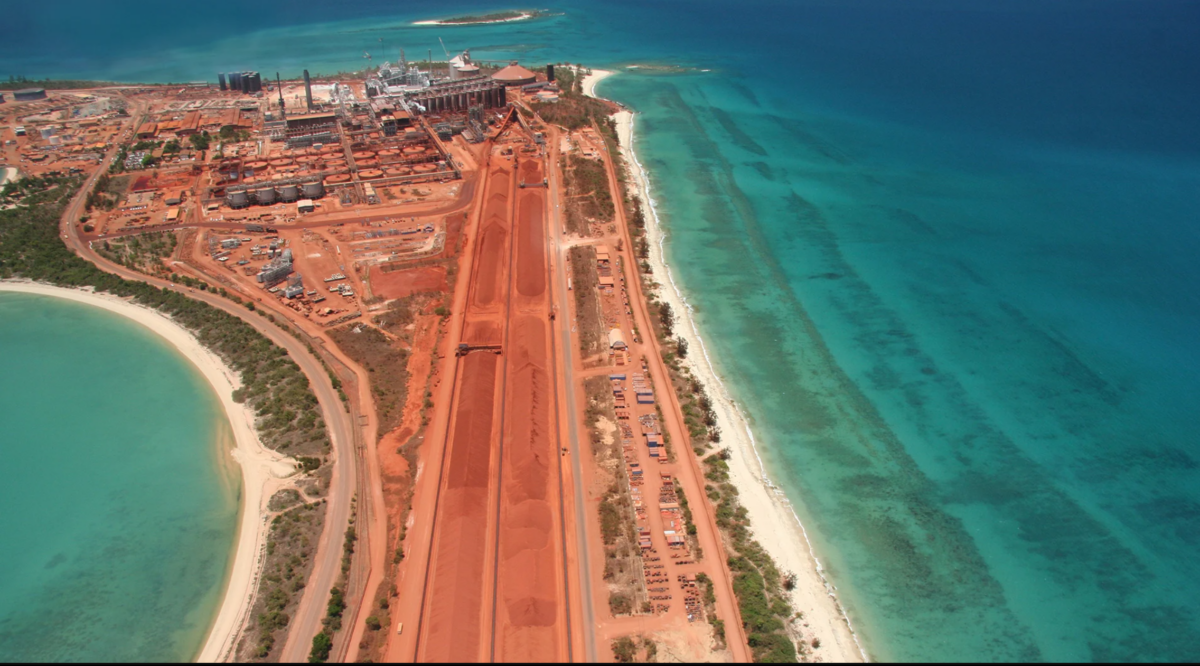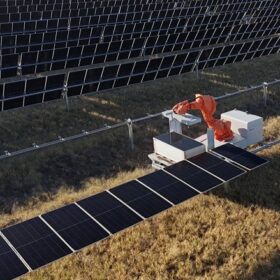Global resources giant Rio Tinto will install two 5.25 MW solar farms on the Northern Territory’s Gove Peninsula reducing the carbon emissions at its Gove bauxite mine by 17%.
This will be achieved by reducing the region’s annual diesel consumption by about 20%, or 4.5 million litres a year, and will lower annual carbon emissions by more than 12,000 tonnes, the equivalent of taking 2,800 internal combustion engine cars off the road.
United Kingdom-headquartered renewable energy solutions company Aggreko will construct, own and operate the solar farms for Rio for up to 10 years, beginning construction later this month and targeting completion in 2025.
The solar plants will be built on First Nations Gumatj and Rirratjingu Country on Rio Tinto leases.
Rio Gove Operations Acting General Manager Shannon Price said the solar project is part of a shared vision with traditional owners to leave a positive legacy for the Gove Peninsula communities after bauxite mining ceases.
“We’re excited to work with the Gumatj and Rirratjingu clans to provide an opportunity to secure alternative electricity generation assets on their country and to discuss opportunities to commercialise energy infrastructure in the future,” Price said.
“We are working in partnership with the Northern Territory Government and Traditional Owners to ensure a smooth transition of leased land and town assets and infrastructure as Rio Tinto prepares to stop mining at Gove later this decade.”
Price said the company is committed to providing options for reliable, affordable and environmentally sustainable infrastructure.
“The solar farms are also part of our ongoing commitment to decarbonise our business. Once operational, they are expected to reduce annual CO2 emissions at our Gove operations by up to 17%,” he said.
Toward the company’s ongoing efforts to decarbonise, Rio recently announced completion of a 3.5 MW capacity solar power plant at their Diavik Diamond Mine in Canada’s Northwest Territories.
The 6,620-panel facility is expected to generate 4.2 million kWh of solar energy annually, reducing diesel consumption at Diavik by one million litres per year and cutting greenhouse gas emissions by 2,900 tonnes of CO2 equivalent, or equal to removing 630 cars from the road each year.
The solar power plant will provide up to 25% of Diavik’s electricity during that mine’s closure work, which will run to 2029.
The project was supported by $3.6 million (USD 2.4 million) in funding from the Canadian government’s Northwest Territories’ Large Emitters GHG Reducing Investment Grant Program.
This content is protected by copyright and may not be reused. If you want to cooperate with us and would like to reuse some of our content, please contact: editors@pv-magazine.com.








By submitting this form you agree to pv magazine using your data for the purposes of publishing your comment.
Your personal data will only be disclosed or otherwise transmitted to third parties for the purposes of spam filtering or if this is necessary for technical maintenance of the website. Any other transfer to third parties will not take place unless this is justified on the basis of applicable data protection regulations or if pv magazine is legally obliged to do so.
You may revoke this consent at any time with effect for the future, in which case your personal data will be deleted immediately. Otherwise, your data will be deleted if pv magazine has processed your request or the purpose of data storage is fulfilled.
Further information on data privacy can be found in our Data Protection Policy.